Minimal Surface Bubbles
It turns out that soap bubbles create surfaces of minimum area that fills a closed shape. So, we built closed shapes using zometool and used soap bubbles to find the minimal surface that connects the edges. One of the cool shapes is shown below. I wonder what the equation determining the shape of the curve is and if it is possible to figure it out analytically.
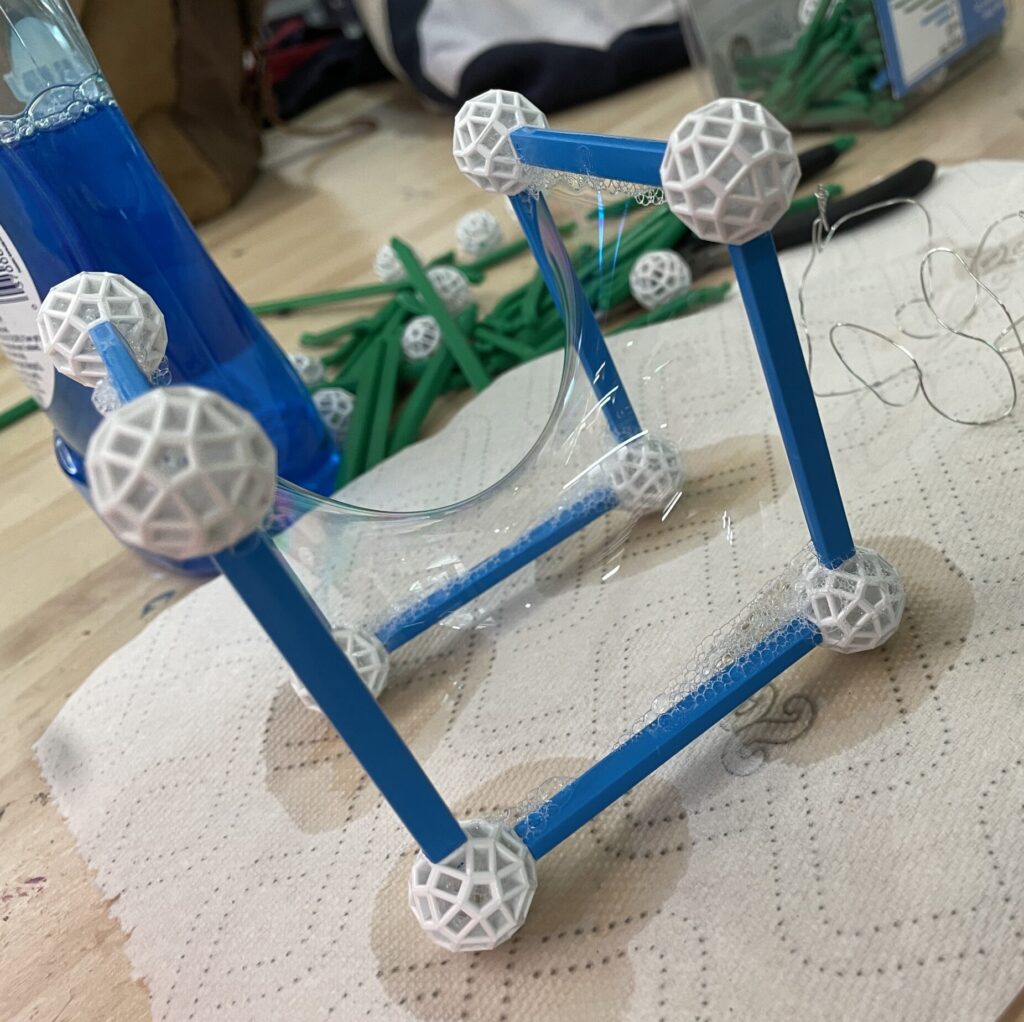
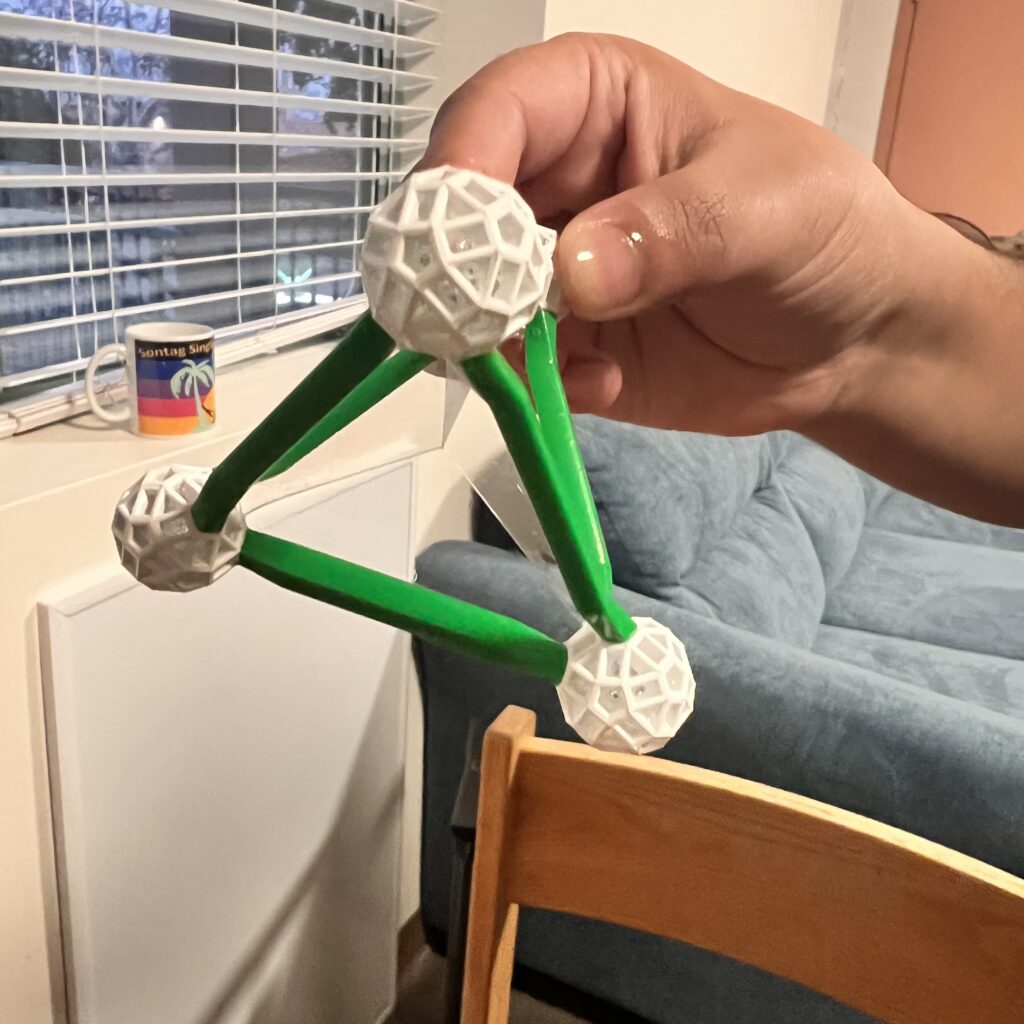
Hexaflexagon
For this project, we made a hexaflexagon. This is a shape with the property that you could reveal three different faces by flexing the shape and folding them out.
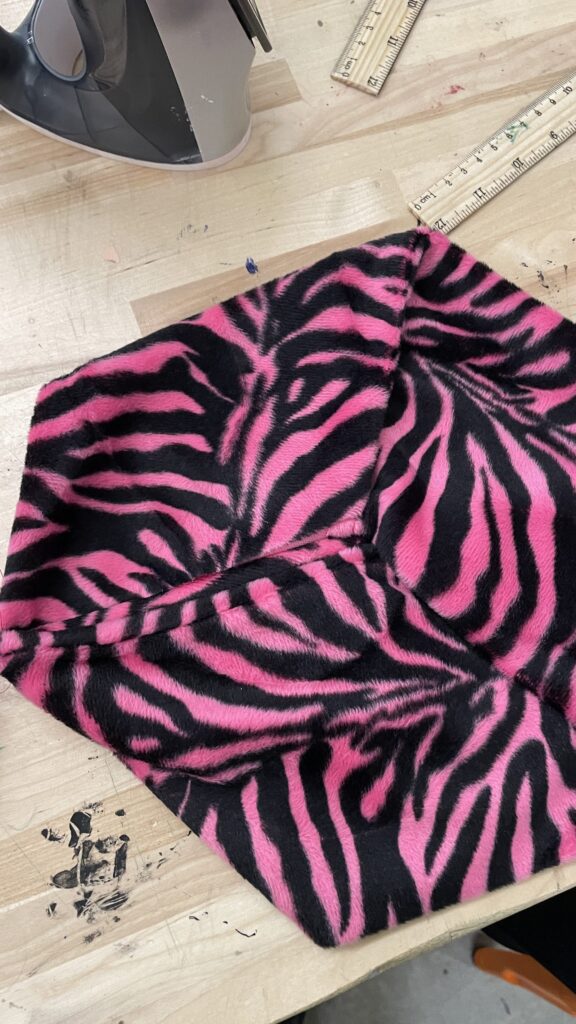
Fractal Sets
For this project, we used the laser cutter to cut out and layer more and more refined versions of the mandelbrot set. Since the set is a fractal, we could theoretically have infinitely more layers with more detail at each level, but we were limited by the precision of the laser cutter.

We tried something similar with the Julia set, but instead of making it more refined, we varied a parameter in the equation that generates it. We ended up getting this cool dragon looking thing.
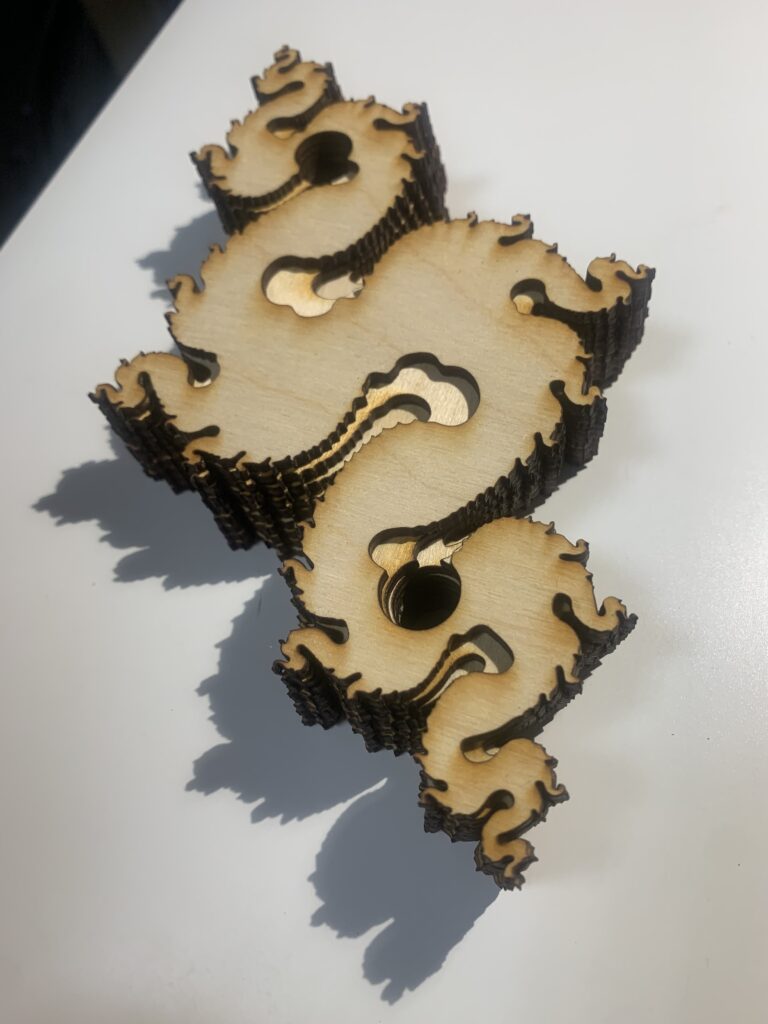
Frieze Group Water Bottle
For this project, I laser engraved the seven frieze groups on a water bottle. I think the coolest thing about math are the exhaustive lists. The frieze groups are an exhaustive list of all of the symmetries you can have on an infinitely long strip of paper. It turns out there are only seven and they end up making cool patterns.
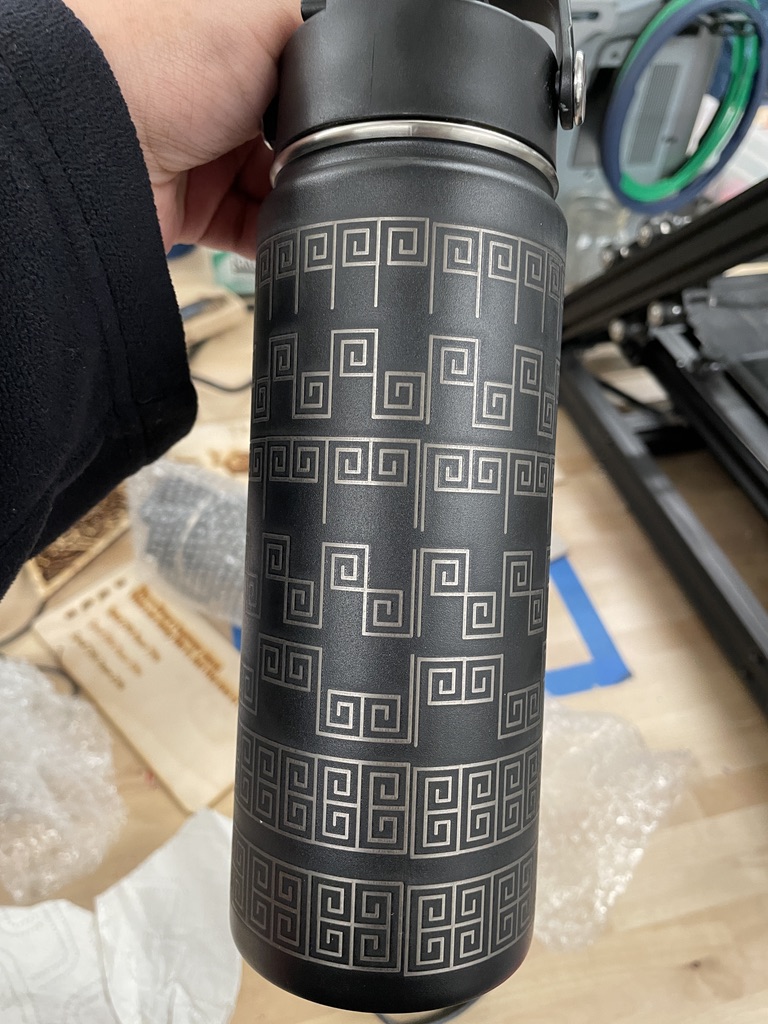
100 Prisoners Game
For this project, I made some cards that can be used to play the 100 prisoners game. The game goes as follows,
The problem starts with 100 boxes labeled 1-100 and 100 pieces of paper labeled 1-100. The papers are distributed randomly into the boxes. Now, there are 100 prisoners labeled 1-100. They are told that if all 100 of them are able to draw the paper with their number given 50 chances, then they can all leave. However, the catch is that they cannot communicate with each other after opening their box. But, they can devise a strategy before hand. What is the optimal strategy?
I made two sets of cards where one acts as a box and the other acts as a slip of paper. So, the box cards are folded and the other cards can fit inside.
The thing I like about this game is the approach you need to take to solve it. The optimal strategy is does not involve communicating what is in each of the boxes. It actually involves thinking about permutations of numbers. These kinds of strategies are also very important in abstract algebra and group theory.
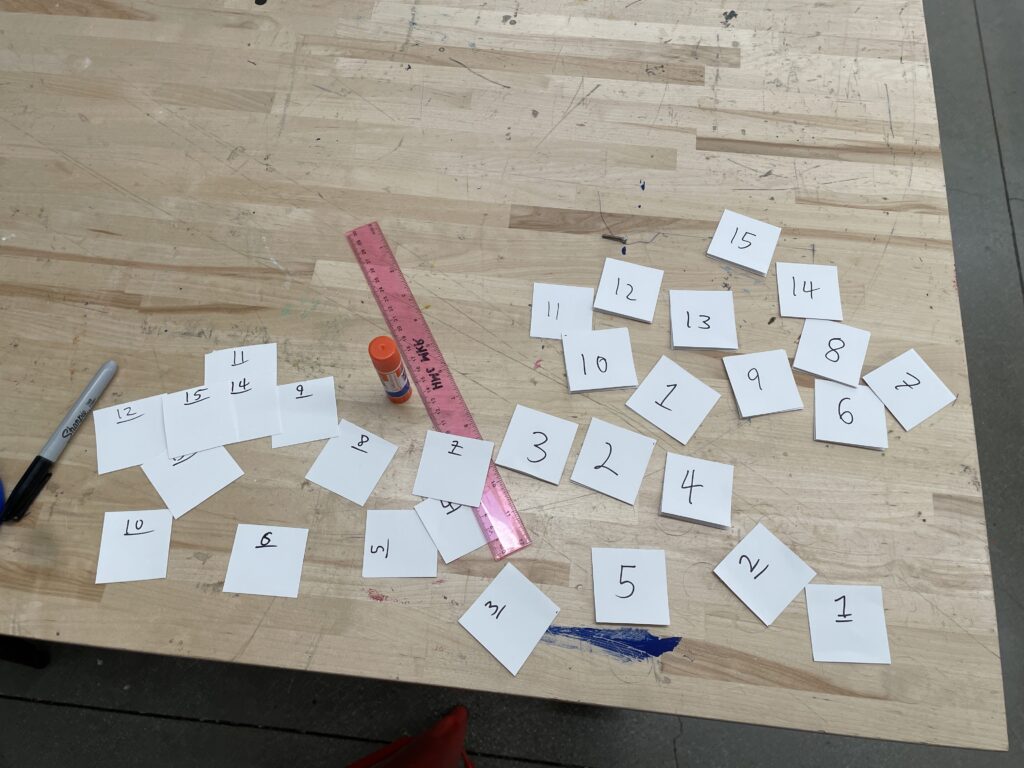
Takeaways From the Class
In this class, I think I was able to appreciate math in a way I rarely get to do. Most of the time, when people talk about the beauty of math, they refer to surprising theorems or nice proofs. But, there is also a lot of beauty in visual representations of math and in math games.
I also gained mastery with the laser cutter over this course after using it for both the fractal set and frieze group project. In the future, I want to try using a laser cutter to make a puzzle about the efficient packing of 17 squares problem.
Leave a Reply